Scottish Landlords ‘Heading into Choppier Waters’
Rents in Scotland are at a record high, after the fastest month-on-month growth on record, according to the latest Scotland Buy-to-Let Index from Your Move.
Average residential rents in Scotland have shot up 1.3% from May, after the cost of the new Land and Buildings Transaction Tax (LBTT) surcharge has pushed up prices in the market.
This increase means that the average rent in Scotland now stands at £549 per month. This is the highest Scottish rents have been ever been, surpassing the previous record set in July 2015.
This month also marks five years since the Scottish National Party gained an overall majority in the Holyrood. Since then, average rents have seen a 7.9% (£40) upswing from £509 per month in May 2011.
Brian Moran, lettings director at Your Move Scotland, says: “Rents are rising rapidly as a result of the new Land and Building Transaction Tax surcharge for buy-to-let properties.
“This tax hike has dissuaded landlords from investing in the sector leading to a shortage of homes to rent, compared to the demand for housing. With the limited supply of rental properties, potential tenants have been forced to compete to secure homes, pushing up rents.
“The introduction of this anti-landlord legislation from Holyrood has ensured the cost of the policy has hit tenants hardest.
“Since the SNP came to power five years ago, monthly rents have increased by an average of £40. However, the rent control policy in the Scottish Government’s private tenancies bill will only treat the symptoms, not the cause of rising rents.
“By limiting the rent that can be charged on a property, becoming a landlord will become less appealing, limiting investment and forcing many to consider leaving the sector. This will lead to an even greater shortage of homes to rent. In addition, without the potential incentive of higher rents, landlords will lack the motivation and finance to improve the quality of their properties. The government needs to look at incentivising landlords to increase the supply of rental properties in Scotland. With more homes available to rent, tenants wouldn’t need to compete for properties and rents would be more affordable”
On a monthly basis, rents rose across all of Scotland’s regions in May.
Glasgow & Clyde has seen the steepest uplift month-on month, with rents in the region increasing 1.9% from May. This amounts to a £11 jump in cash terms, with typical rents increasing from £538 in May, up to £549 in May.
The smallest monthly upswing in rents occurred in the Highlands & Islands. Rents in the region increased by just £1. With a smaller population and fewer high paying jobs than other parts of Scotland, competition for rental properties in the region has not been as fierce.
In the South of Scotland, the increase in rents was also marginal, with only a 0.2% uptick leaving typical rents to standing at £514 – the lowest average of any region.
Meanwhile, in Edinburgh & the Lothians, rents continued their upward trajectory, rising 1.7% (£11) from May, pushing the typical rent in the region to a record high of £662 per month.
The East of Scotland has seen rents increase by 1.7% (£9) month-on-month. This has raised the average rent in the region to £522 – the highest level since November 2015.
In the longer term, rents are only higher in two of Scotland’s regions year-on-year. In Edinburgh & the Lothians, rents have soared 11.6% (£69) year-on-year. This is the fastest growth on record powered by the growing proportion of higher paying jobs in the area, compared to the shortage of homes. The South of Scotland has also seen an increase in rents over the year, with a 0.9% upswing. Average rents in the region are £4 higher than May 2015.
Glasgow & the Clyde has seen the steepest decline in rents annually. Typical rents in the region have dropped 3.2% (£17) year-on-year.
Despite subdued annual rent growth, tenant finances have not improved. Instead, Scottish tenant arrears have climbed for the third successive month.
The proportion of late rent increased to 12.5% of all rent due in May, compared to 11.6% in May. On an annual basis, tenant arrears have worsened too, with late rent standing at just 8.8% in May 2015.
Moran says: “Scottish tenants are finding it harder to pay the rent. Tenant finances improved over the winter months, but it appears spring has been a tougher test. With employment in Scotland falling by 48,000 between February and May, some tenants may be struggling to make ends meet. However, on a positive note our research shows fewer tenants are falling into serious rent arrears, where they are more than two months behind in their rent.
“With increasing costs of renting and less employment in Scotland, tenants will need additional support from landlords. But the government’s policies are instead turning the screws on landlords; driving a wedge between them and their tenants. The government appears to have adopted a strategy of scapegoating landlords, instead of addressing the low wage growth, limited housing supply and state of the Scottish economy.”
The average gross yield on a buy-to-let property in Scotland stands at 4.0% in May 2016, A slight 0.1% uptick month-on-month. Compared to a year ago, this marks an improvement from 3.8% in May 2015.
Moran concludes: “With total annual returns slowly improving and gross yields also rising, landlords have enjoyed some plain sailing recently. However, the full impact of the LBTT surcharge, the reduction in mortgage tax relief and private tenancies bill are yet to be felt.
“It appears landlords may now be heading into choppier waters, with the storm of legislation heading their way.
“At a time when the number of people looking for homes to rent continues to rise, landlords will need to weather this tempest, if they are to meet Scotland’s housing needs.”


